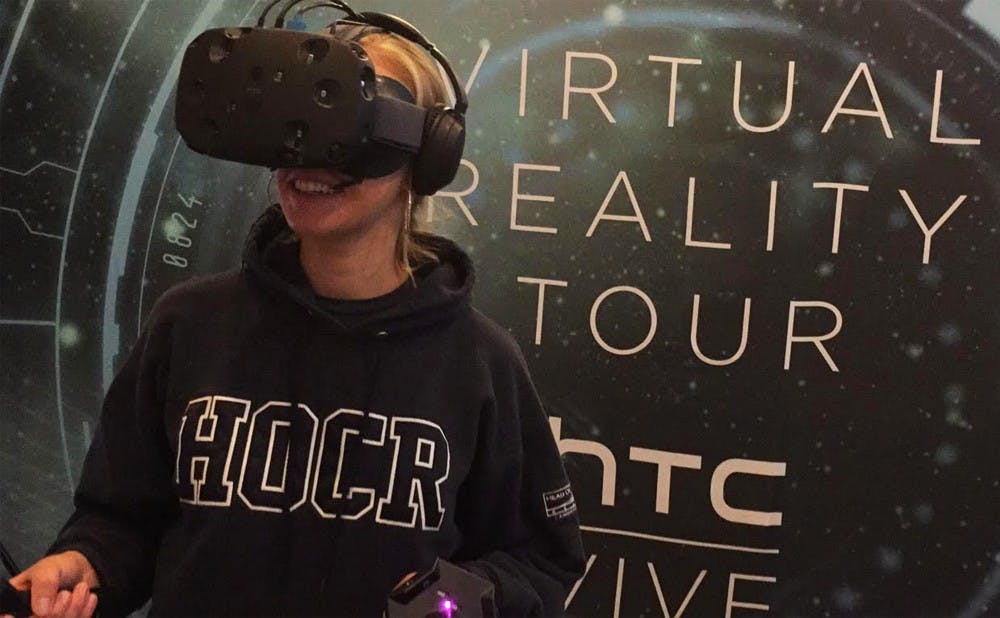HTC’s virtual reality headset prototype impressed members of the Duke community who got to participate in a virtual reality demonstration last week.
A smartphone manufacturer, HTC held demonstrations in CIEMAS for Duke staff and students to try on the HTC Vive headset—one of a series of demonstrations at universities, including the University of California, Berkeley and Northeastern University. The HTC Vive’s software was created by Valve Corporation’s Steam platform, with the hardware made by HTC. Together, the demonstration of the device provided a realistic experience of gaming and other types of environments, students said.
“The demos are seriously not like anything I’ve ever experienced before,” said freshman Jasmine Lu, who helped run the demonstrations. “The environment is so easy to interact with, and you really feel immersed in the new space.”
One of the features shown was 360-degree room-scale virtual reality. Jacob Ross—regional manager at the AroundCampus Group, which brings speakers to college campuses—described 360-degree room-scale as a distinguishing feature of the HTC Vive that allows users to explore a virtual location. In the demonstration, users could explore an entire 15 by 15 foot space as the system tracked both horizontal and vertical movement—for example, if the user dropped something on the floor in a game, he or she would be able to bend down and pick it up.
“I have a fear of heights, and there were a couple of demos where you’re able to look over edges—my heart was pounding,” Ross said. “It was really hard to remember sometimes that this is the virtual world while your body and brain are telling you ‘no, this is real life.’”
Other demonstrations included wandering around a kitchen and watching a life-sized whale in the ocean. The Tilt Brush demonstration let people try 3D painting with the entire room as their canvas.
Another popular demonstration took place in Aperture Science, a setting in the popular video game Portal. Exploring Aperture Science in virtual reality is a “totally different experience” from playing Portal on a traditional computer, Ross said.
Other demonstrations involved significantly more action.
“I’ve had sniper fire coming in, and I’m crawling on the floor army-style trying to get behind the desk in the game to escape these bullets,” Ross added. “Yet when people are watching me do it, they just see my crawling on the floor.”
Junior Sivaneshwaran Loganathan stated that he was particularly impressed by the visuals and the sense of complete immersion into the environment, adding that he prefers the HTC Vive to the Oculus Rift, another virtual reality headset that is currently available commercially.
“[The HTC Vive] was leagues better than that,” Loganathan said. “The graphics were just so much more realistic.”
The Duke community displayed enthusiasm for the demonstrations, Ross said. He noted that, of all of the campuses he had visited so far, Duke had the highest number of demonstrations and the most registration interest. On last day of the tours, a line extending out the door had formed 30 minutes before registration, and only half were able to get on the schedule, he said.
Students said the experience lived up to the hype.
“[The experience] seems like you are actually walking around the virtual space,” Lu said. “Mix that with really stunning visuals and sounds—as my roommate who tried it said, ‘it’s better than anything I could have dreamed.’”
Get The Chronicle straight to your inbox
Signup for our weekly newsletter. Cancel at any time.

